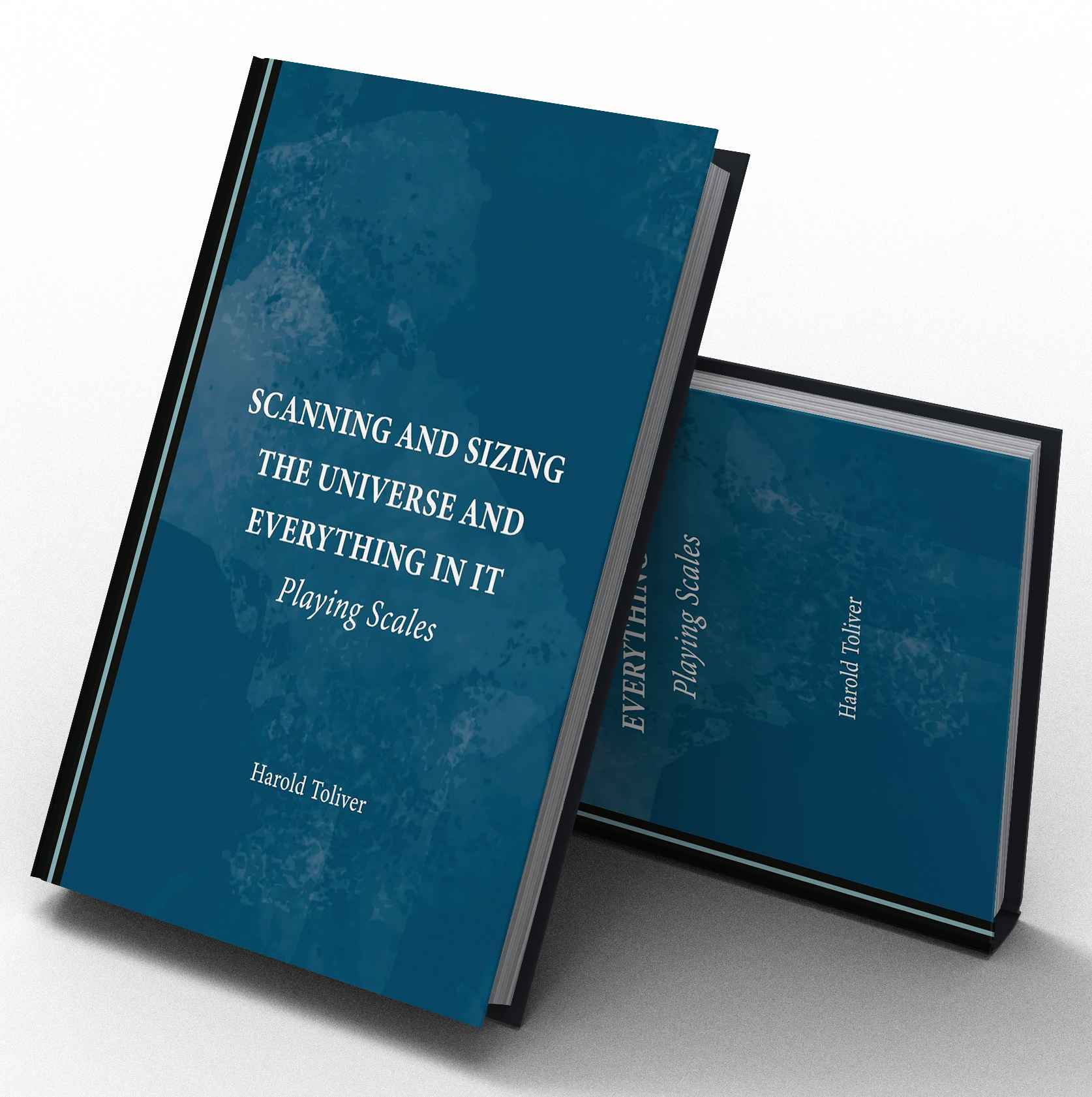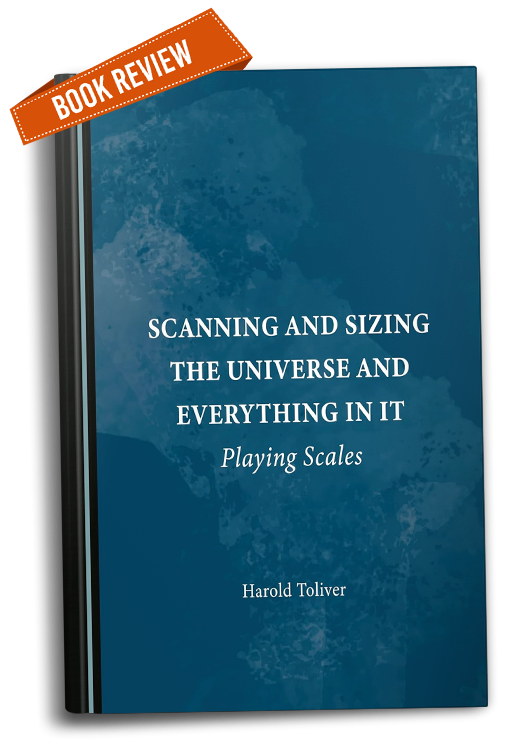
About the Book
Scanning and Sizing the Universe and Everything in It
Playing Scales
One of the faults in philosophy generally―even the philosophy of science―is ignoring the extended scale of the natural continuum and putting in its place something Anthropomorphic. This book suggests a means of keeping score that puts common situations, places, topography, and even home ground in the context of that continuum, the whole of atomic matter and its history. As shown here, the discrepancy between normal measurements and what actually exists is similar to that between ‘yardsticks’ and ‘light years’.

Reviews
In Scanning and Sizing the Universe and Everything in It: Playing Scales by author Harold Toliver, the vast range of physics and mathematics is explored within the book, which is deemed ahead of its time. It was designed to combine factual information on astrophysics with philosophical theories.
In this book, everyday ideas and views of world history are explained in relation to nature’s bigger picture. Revelations are made concerning the meanings of fear, freedom, and succession. A framework for cultural histories from their origin to their current state is provided by the composite picture presented in the book. Disciplines such as anthropology, paleontology, philosophy, and religion are framed within this context.
The various scales of the universe are explored within the book. This exploration ranged from the infinitesimally small particles that make up matter to the expansive galaxies scattered throughout the cosmos. The writing style employed by Toliver is straightforward, filled with detail, and designed to make complex scientific concepts digestible for readers with varying levels of familiarity with astrophysics. Narratives of groundbreaking discoveries, encompassing principles from quantum mechanics to the mysteries of dark matter and energy, are woven together seamlessly.
More than a scientific exposition is provided. A contemplative exploration of humanity’s place in the universe is undertaken. Musings about existence, consciousness, and the quest for meaning amidst the vast expanse of space are delved into by the author. Readers are urged to ponder questions that exceed practical observation. The profound implications of an ever-expanding understanding of the universe were grappled with. On page 292 of the book, data concerning the Global Cloud was presented by NOAA and IPCC. This data reveals the impending impact of the global climate crisis. Unlike other literary works that predominantly predict problems, solutions are emphasized in this book. Real societal issues are discussed and substantiated by philosophical citations. In Wislawa Szymborska’s poem, “The Century’s Decline,” resonating facts are presented. After engaging with this book, readers are left with a lasting sense of healthy skepticism.
Scanning and Sizing the Universe and Everything in It: Playing Scales stands as a masterful blend of science, philosophy, and storytelling. The expertise of the author is evident in the meticulous exploration of the universe’s myriad scales. With its accessible writing style and seamless integration of complex concepts, this work is poised to captivate audiences across the genres of historical, philosophical, and astrophysics studies.
Source: https://www.pacificbookreview.com/scanning-and-sizing-the-universe-and-everything-in-it/
People have long tried to make sense of the world in which they live, either with notions of religion and mysticism or scientific study. A common trapping of either approach is to anthropomorphize our world as if all things in it must make sense in the context of human existence and experience. Yet, as we use technology and new advances to extend our observation to the vast nature of space and the minuscule details of the atomic and subatomic levels, many people manage to make this same error. Rather than taking stock of the very small set of circumstances that can sustain human life, many try to contextualize these previously unknown, unglimpsed realms in a way that only benefits us as humans to understand.
Drawing from centuries of discourse between naturalists or scientists and those who feel that there are domains we are not meant to look into, this book discusses a plethora of the day’s biggest questions. By offering the scientific advances that put these strange frontiers into perspective, it becomes simple to see that trying to bring an issue of scale far beyond what human life on Earth has the context or the skills for out of its normal perspective leads to skewed and fallible results. Instead, we can find the value of this knowledge massively edifying without making it about us, gaining more historical perspective about this planet, everything on it, and what needs to be done to ensure its prolonged existence in relative comfort and safety.
The cutting edge of scientific research can be found in understanding how the tiniest elements of large celestial bodies operate, neither of which can be properly found and studied in a natural environment on Earth. Similarly, the measurements that most people are equipped to think in are totally unsuitable for this task without the use of ridiculous comparisons or lengthy exponents. The author’s point of detaching that humanizing mindset from questions concerning inhuman materials and subjects is best typified as simply using the wrong tool for the job. A wealth of texts from great thinkers both within and outside of the scientific discipline are quoted, showing what kind of resistance might be found in taking such an approach, but also in the merits of removing this kind of self-centered motivation from the equation.
Beautifully phrased, fully contextualized, and diligently sourced, this material manages to make a quandary that, by its own admission, is hard to visualize and grasp into something that presents itself without much confusion. Whether a seasoned academic or someone looking to broaden their perspective a little bit, the reader will find a veritable rabbit hole of research topics and questions they didn’t even know they were curious about. The structure of each chapter begins by summarizing the argument the author is prepared to lay forth so that there is an immediate understanding of what is being discussed, and each following page and subsection unravels methodically, keeping things in a logical train of thought that keeps things fascinating and reined in just enough to keep from losing the point. Though we may not be able to detect these objects, components, or phenomena with the naked eye or any of our natural senses, the importance of continuing to study and understand them becomes all too apparent after just a few pages of reading this fascinating and thought-provoking book.






